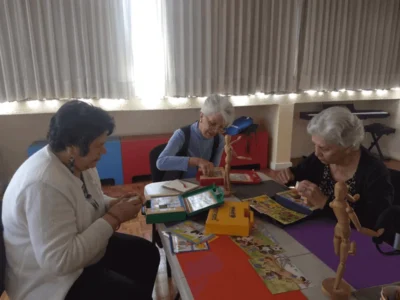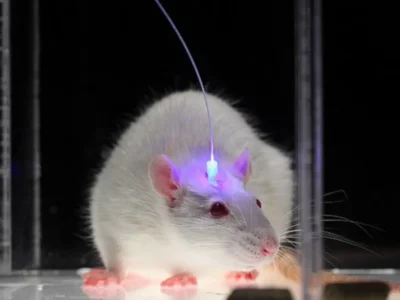General health psychologist Rosa Hidalgo Torres discusses in this article attachment theory, as well as the main tenets of attachment theory, applications and disorders.
What is attachment theory?
Attachment theory is a term used to describe emotional bonds. These bonds have a significant impact on birth and neurodevelopment.
Attachment is the deep emotional bond that forms between a person and their primary attachment figures, usually parents or primary caregivers.
From the moment of birth, attachment plays a crucial role in the newborn’s well-being and development. Babies depend on their caregivers to meet their basic needs, such as nutrition, safety and affection. The quality of the attachment relationship will influence how babies experience and respond to the world around them.
When caregivers respond sensitively and consistently to the baby’s cues and needs, a secure attachment is established, which promotes a healthy development and a secure base from which they can explore their environment and develop cognitive and emotional skills.
Who developed attachment theory?
Attachment theory was developed by the British psychologist John Bowlby, in the years (1969-1980), who argued that human beings have an innate tendency to seek proximity and contact with their attachment figures, especially in moments of distress or danger.
Bowlby, through his work during World War II with children separated from their parents and institutionalized, found patterns of behavior and emotional responses that were common to all of them: a strong need to establish and maintain proximity to their primary caregivers, especially in stressful or dangerous situations.
He observed that children sought physical contact, security and comfort from their attachment figures to soothe their distress and restore their sense of safety, and that the quality of the attachment relationship between the child and their primary caregiver had a significant impact on emotional development and on how children interacted with the world.
The main tenets of attachment theory
The need for attachment: Human beings have an innate need to form emotional and affective bonds with attachment figures, especially during the early years of life. This bond provides security, protection and emotional support.
The importance of the attachment figure: The primary caregiver, generally the maternal figure, plays a crucial role in the development of attachment. This figure becomes a secure base from which the child can explore the world and to whom they can turn in moments of stress or danger.
The caregiver’s sensitivity and responsiveness: The quality of attachment largely depends on the caregiver’s sensitivity and responsiveness to the child’s emotional needs. Caregivers who are sensitive, warm and consistent in their responses foster a secure and healthy attachment.
Internal working models: Early attachment experiences form internal working models in the child’s mind, which are mental representations of relationships and the world. These internal models influence how the child perceives and responds to relationships and can have a lasting impact on their emotional and social development.
The influence of attachment on later development: The quality of attachment established in childhood has implications for the child’s later development. Children with a secure attachment tend to show greater confidence, self-esteem, emotional regulation ability and social skills, while those with an insecure attachment may experience difficulties in these areas.
His pioneering work laid the foundations of attachment theory, which has significantly influenced our understanding of emotional development, interpersonal relationships and mental health across the lifespan.
Types of attachment
Bowlby identified four types of attachment: secure, avoidant, ambivalent and disorganized. These patterns manifested in children’s emotional responses and behaviors when they encountered new, stressful or threatening situations.
- Secure attachment: Children with a secure attachment style show trust in their primary caregivers and feel safe exploring their environment. These children seek their caregivers in moments of stress or anxiety and are comforted by their presence. They respond positively to closeness and emotional intimacy, and trust that their needs will be met.
- Avoidant attachment: Children with an avoidant attachment style tend to avoid closeness and emotional dependence. They may appear independent and show little affection toward their caregivers. These children may minimize the importance of close relationships and may have difficulty seeking emotional support in times of stress.
- Ambivalent attachment: Children with an ambivalent attachment style show excessive concern about closeness and approval from their caregivers. They may have difficulty exploring their environment and may show anxiety and resistance when their caregivers try to separate from them. These children may struggle to feel secure in relationships and may constantly seek validation and attention from others.
- Disorganized attachment: Disorganized attachment is characterized by contradictory and confused responses in children toward their primary caregivers. They may display contradictory behaviors, such as seeking closeness while at the same time showing fear or avoidance toward their caregivers. These children may have experienced traumatic situations or abuse, which can generate disorganized responses in the context of attachment relationships.
What disorders can arise if there is no secure attachment?
In terms of neurodevelopment, the quality of attachment influences how brain circuits develop and neural connections are established.
The brain regions involved are:
Amygdala: The amygdala plays a crucial role in emotional response and fear regulation. In the context of secure attachment, a healthy and well-regulated amygdala allows for an appropriate response to stressful situations and a quick recovery after the resolution of the conflict.
Hippocampus: The hippocampus is fundamental for memory and learning. A secure attachment promotes proper hippocampal development, which facilitates the formation of positive emotional memories and the ability to learn from experiences.
Prefrontal cortex: The prefrontal cortex plays a crucial role in emotional regulation, decision-making and planning. In the context of secure attachment, appropriate development of the prefrontal cortex is promoted, allowing for better emotional self-regulation and more balanced decision-making.
Reward system: The reward system, which includes regions such as the nucleus accumbens and the cingulate cortex, is involved in the experience of pleasure and gratification. A secure attachment favors healthy activation of this system, allowing for a greater capacity to experience and enjoy social and affective interactions.
Babies who experience a secure attachment have a more balanced stress system and a more efficient response to stressful situations.
Conversely, insecure attachment styles may be associated with difficulties in emotional regulation and a reduced capacity to form healthy social relationships.
Some attachment disorders that can be found
- Separation anxiety: Some children may experience intense anxiety when separated from their parents or caregivers. They may fear that something bad will happen to them or that their loved ones will abandon them. This can affect their ability to separate calmly and participate in daily activities, such as going to school or sleeping alone.
- Emotional regulation difficulties: Children with an insecure attachment may have difficulty managing and regulating their emotions. They may have frequent mood swings, difficulty calming down when upset or difficulty expressing their feelings appropriately. This can manifest as frequent tantrums, aggressive behavior or emotional withdrawal.
- Behavioral problems: Patterns of insecure attachment may be related to behavioral problems in children. They may show defiance toward authority figures, difficulty following rules, impulsivity or disruptive behavior. These behavioral problems may be a way of expressing emotional insecurity and seeking attention or control in their relationships.
- Low self-esteem and relationship difficulties: Children with experiences of insecure attachment may have low self-esteem and a negative view of themselves. They may feel undervalued or unable to establish healthy relationships with others. They may also have difficulty trusting others or forming close and lasting relationships.
- Reactive attachment disorder: In more severe cases, some children may develop reactive attachment disorder. This occurs when they have not had a consistent attachment figure or have experienced neglect or abuse. These children may have difficulty forming meaningful relationships, show a lack of positive emotions toward others and display inappropriate behaviors.
How can I tell if I’m raising my child with a secure attachment?
To assess whether you are raising your child with a secure attachment, you can consider the following signs and behaviors:
- Close emotional bond: Observe whether your child feels close and connected to you. Look for signs that they feel safe and comfortable expressing their emotions and needs with you.
- Seeking comfort: Observe how your child seeks comfort and emotional support when they feel distressed or insecure. A child with a secure attachment will turn to you for comfort and will calm down more quickly in your presence.
- Exploration and autonomy: Observe whether your child feels secure enough to explore their environment and take small risks independently. A child with a secure attachment will feel confident to explore and learn, knowing they can return to you for support if necessary.
- Emotional regulation: Observe how your child manages their emotions. A child with a secure attachment tends to have better emotional regulation, showing the ability to identify and express their emotions appropriately.
- Trust in caregivers: Observe whether your child trusts you and other important caregivers in their life. A child with a secure attachment will trust that caregivers will meet their needs and provide a safe environment.
- Open and affectionate communication: Observe whether you have open and affectionate communication with your child. A secure attachment is characterized by clear, respectful and affectionate communication, where the child feels heard and understood.
Secure attachment develops and strengthens over time. It is always possible to work on building a secure attachment with your child, even if there are areas where you feel you need to improve.
How can we foster a secure attachment with our children?
To foster a secure attachment with our children, it is important to keep in mind some guidelines that caregivers can follow:
- Establish a secure base: Caregivers should provide a safe and predictable environment for the child. This involves establishing routines, offering comfort and protection when the child is distressed and providing a physically and emotionally safe environment.
- Respond sensitively: It is essential to respond sensitively and promptly to the child’s needs. This involves paying attention to the child’s cues and expressions, validating their emotions and providing comfort when needed. The ability to tune in and respond to the child’s emotional needs helps build a foundation of trust and security.
- Establish effective communication: Caregivers should establish open and affectionate communication with the child. This involves active listening, speaking in a gentle and caring tone, and expressing love and affection regularly. Clear and positive communication helps strengthen the emotional bond between the caregiver and the child.
- Encourage exploration and autonomy: It is important to allow the child to safely explore their environment and encourage their autonomy. Caregivers should provide opportunities for independent play, discovery and learning, encouraging the child to make decisions and take on responsibilities appropriate for their age.
At the same time, there are certain actions or attitudes we should avoid as parents so as not to interfere with the formation of a secure attachment:
- Do not ignore the child’s emotional needs: Ignoring or minimizing the child’s emotions can generate insecurity and anxiety. It is important to be present and show empathy toward the child’s emotional experiences.
- Avoid physical or emotional punishment: Physical or emotional punishment can damage the attachment relationship and generate fear and resentment in the child. It is important to set clear limits and use positive and respectful discipline methods.
- Don’t be overprotective: Although it is essential to provide protection and security, being overly overprotective can limit the development of the child’s autonomy and confidence. Allowing the child to take calculated risks and experience the world is important for their growth.
- Avoid inconsistency and unreliability: Inconsistency in responses or lack of reliability in caregivers can create confusion and anxiety in the child. It is important to be consistent in our actions and words, keep promises and demonstrate reliability.
Conclusions
Attachment theory has helped in the understanding of child development and has demonstrated its relevance in clinical and educational practice. Numerous research studies in this field have affirmed that early attachment is fundamental, as attachment patterns established in childhood can have repercussions throughout life.
A secure attachment in childhood is associated with better emotional well-being, greater resilience and improved coping skills in adulthood. Conversely, an insecure attachment can predispose to emotional problems and difficulties in interpersonal relationships in adulthood.
Identifying and addressing attachment difficulties during childhood can have positive effects on the child’s emotional and relational development. Each child and situation are unique, and it is important to adapt these guidelines to each one’s individual needs. The key is to maintain a loving, respectful and responsive relationship with your child, and to seek support from a child psychologist if you have concerns or difficulties in parenting.
Bibliography
Hernandez Pacheco, M (2017) Attachment and Psychopathology: anxiety and its origin. Conceptualization and treatment of pathologies related to anxiety from an integrative perspective. Desclée De Brouwer.
Holmes, J (2011) Attachment theory and psychotherapy. Desclée De Brouwer.
López, F., Gómez, M., & Fernández, J. (2019). Study on attachment styles and their relationship with emotional development in childhood. Revista de Psicología Infantil, 35(2), 89-104.
Martínez, M., & González, A. (2021). Influence of maternal-infant attachment on psychosocial development. Psicología y Salud, 31(2), 165-180.
Ramirez S (2015) Attachment parenting: from theory to practice. CreateSpace Independent Publishing Platform.
If you liked this article about attachment theory, you might also be interested in the following articles:
“This article has been translated. Link to the original article in Spanish:”
La teoría del apego: qué es, postulados, aplicaciones y trastornos







 Transcranial Magnetic Stimulation and Cognitive Rehabilitation
Transcranial Magnetic Stimulation and Cognitive Rehabilitation
Leave a Reply